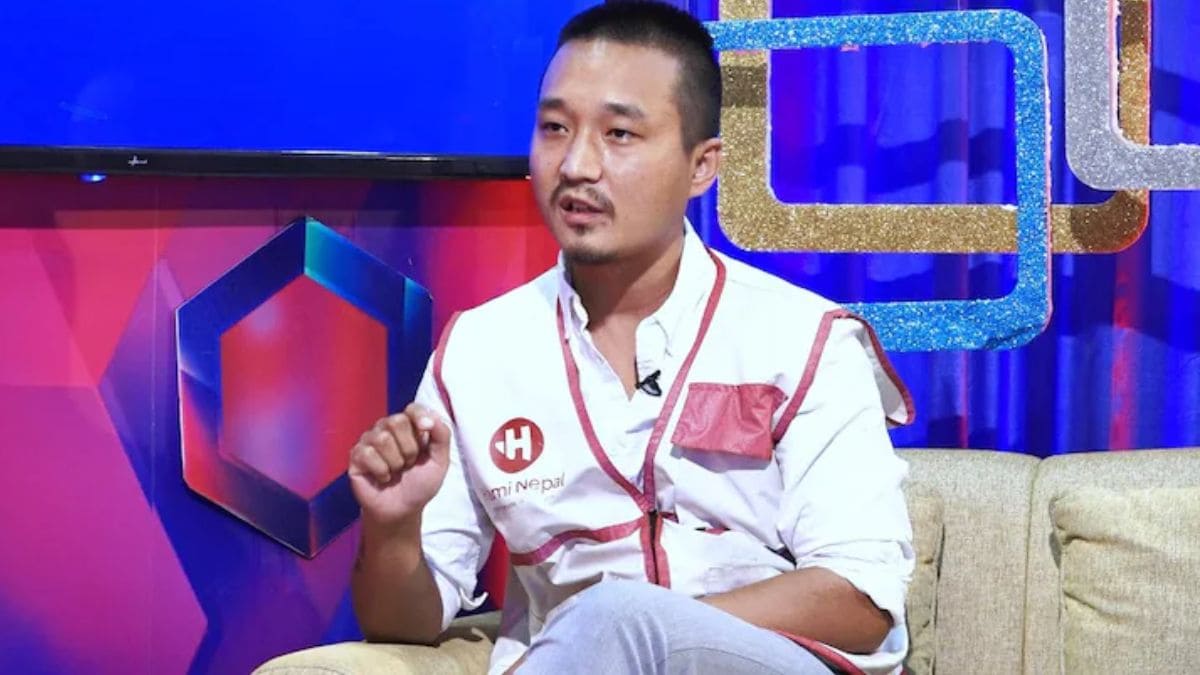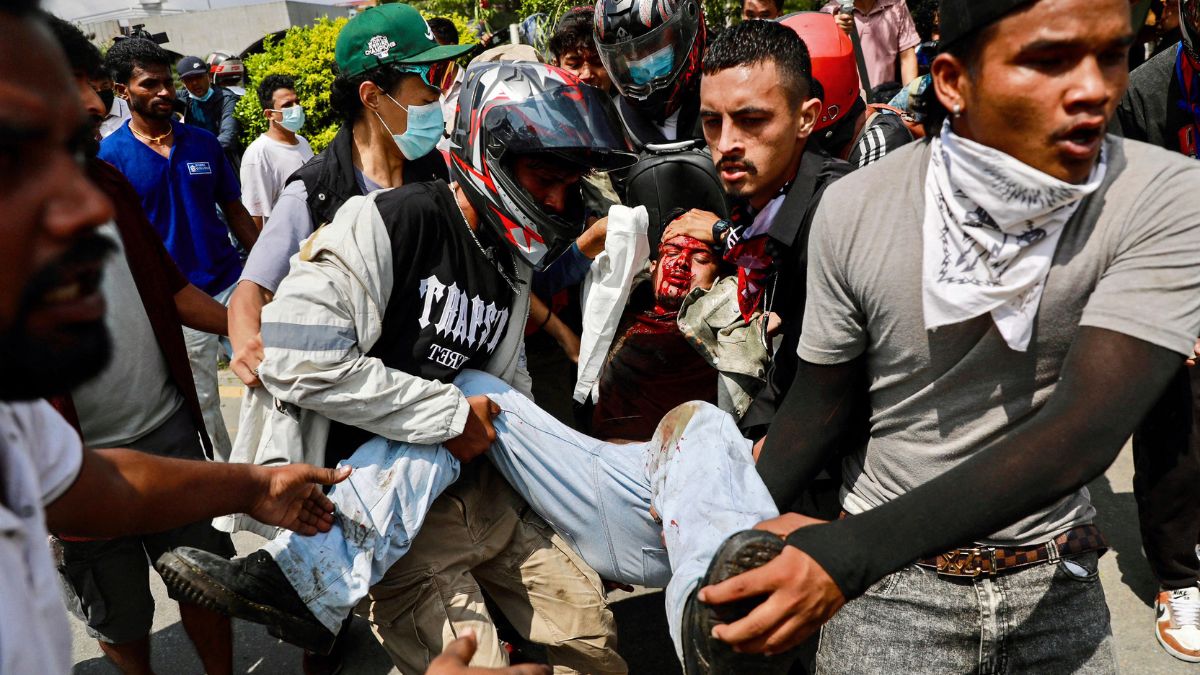Myanmar in 2021, Pakistan and Sri Lanka in 2022, Bangladesh in 2024 and now, Nepal. India’s neighbouring countries have seen economic and political turmoil one after the other over the past few years.
Through these years, India has maintained its “Neighbourhood First” diplomatic approach, playing roles ranging from humanitarian aid to development cooperation, border diplomacy, and cautious engagement depending on each neighbour’s context.
India has done the same amid the current situation in Nepal. Nepal saw massive protests on Monday, leading to at least 19 deaths after security personnel shot at protesters and dozens more injured. On Tuesday, Oli resigned as the PM as protests turned violent. India’s Ministry of External Affairs (MEA) expressed deep sorrow over loss of young lives, said it was closely monitoring the situation, and urged Indian citizens to be cautious and avoid non-essential travel to Nepal.
What Is Happening In Nepal?
On September 4, the KP Sharma Oli government in Nepal blocked 26 social media platforms including Facebook, WhatsApp, Instagram, YouTube, Reddit, and X, citing non-compliance with new registration and oversight mandates. Platforms like TikTok and Viber remained operational as they complied with the requirements. The ban ignited widespread protests led by Generation Z, dubbed the “Gen Z protests.” Crowds, particularly in Kathmandu’s Maitighar and near Parliament, decried the move as censorship and condemned governance failures, corruption, and lack of economic opportunities.
Confrontations turned deadly on September 8, when police opened fire on protesters. At least 17–19 people were killed, and over 100 were injured, including both civilians and security personnel. In an emergency cabinet session, the government reversed the social media ban and restored access to all blocked platforms. Oli expressed regret over the violence, attributing it to “external interference,” and announced:
- Compensation for families of the deceased,
- Free medical care for the injured,
- A 15-day inquiry panel to investigate the unrest, assess losses, and propose safeguards
However, lifting the ban did little to quell public anger. The unrest quickly escalated — protesters vandalised and set fire to homes of top leaders, including the Prime Minister, President, and key cabinet members; flights were halted; and Kathmandu remained under curfew.
Under extreme public and political duress, Oli resigned on September 9, 2025, stating his intention to help facilitate a political solution. His resignation followed the prior departure of several ministers, including the Home Minister (Ramesh Lekhak), citing moral responsibility for the violence.
The scale of protests and Oli’s exit positions Nepal at the brink of major political realignment.
India’s response
While a reaction on Oli’s resignation is impending, earlier on Tuesday, India’s Ministry of External Affairs (MEA) expressed deep sorrow over loss of young lives in Monday’s protests, and said it was closely monitoring the situation. The MEA also urged Indian citizens to be cautious and avoid non-essential travel to Nepal.
What Happened in Bangladesh?
In August 2024, Bangladesh was engulfed in a dramatic political upheaval — triggered by student protests against a disputed quota system, leading to a brutal crackdown, mass casualties, and a constitutional crisis. Sheikh Hasina’s resignation and flight to India compounded the situation, highlighting weaknesses in constitutional provisions. An interim government led by Muhammad Yunus took over after Hasina’s ouster.
India’s response
From India’s side, the response was marked by caution. The government prioritised the safety of its citizens through travel advisories, engaged diplomatically with Bangladeshi military leaders to de-escalate, and provided asylum to Sheikh Hasina while maintaining a stance of limited intervention. Though trade routes like Petrapole were impacted, partial resumption under security underscores the delicate balance both nations tried to maintain.
What happened in Sri Lanka?
In 2022, Sri Lanka plunged into its worst financial crisis since independence, largely due to a sharp depletion of foreign exchange reserves, surging inflation, crippling shortages of essentials like food, fuel, and medicine, and prolonged power outages. Contributing factors included a steep decline in tourism, reduced remittances, ill-timed tax cuts, and high debt obligations. Nationwide protests unfolded throughout 2022, triggered by hardship and mismanagement. In May, Prime Minister Mahinda Rajapaksa resigned after violent clashes left several dead and property burnt. Sri Lanka also entered default and sought an IMF bailout to stabilize its economy.
India’s Response
India emerged as Sri Lanka’s primary and most consistent partner during the crisis, delivering comprehensive financial, humanitarian, and diplomatic support.
A $1 billion credit line for essential imports (food, medicine) was signed in March 2022 during Finance Minister Basil Rajapaksa’s visit. A $500 million credit line for petroleum products from Indian Oil was signed too, expanded by an additional $200 million in April.
The Times of India
A $400 million currency swap via the RBI, plus deferred settlement of $500 million under Asian Clearing Union arrangements further helped Sri Lanka.
By mid-2022, India had extended over US$3 billion in emergency aid; by year-end, total support reached approximately US$4 billion, covering currency, credit lines, and humanitarian aid.
India also dispatched multiple fuel consignments — petrol and diesel — totaling hundreds of thousands of metric tonnes, to address critical power and fuel shortages.
What happened in Pakistan?
On April 10, 2022, Imran Khan was removed as Pakistan’s PM through a successful no-confidence motion, marking the first time a sitting Pakistani PM had been ousted this way. Shehbaz Sharif was promptly elected as his successor.
This triggered immediate reaction. Khan accused a foreign-backed conspiracy, though the military denied such claims. His supporters launched widespread protests across major cities — Lahore, Islamabad, Karachi, etc. — labeling it a “freedom struggle.” The removal of Imran Khan triggered one of Pakistan’s most politically turbulent periods in recent years—marked by widespread mobilization, provocations of conspiracy, and a threat to democratic stability.
India’s response
India’s response was prudent and restrained: monitoring developments closely, yet choosing not to interfere in Pakistan’s internal political upheaval.
What happened in Myanmar?
In February 2021, Myanmar’s military, the Tatmadaw, seized power, detaining State Counsellor Aung San Suu Kyi and President U Win Myint, and declared a one-year state of emergency — citing alleged election fraud in the November 2020 general election. Mass demonstrations erupted across the country. In response, the junta imposed curfews, banned gatherings (e.g., no groups over five people), and deployed force — resulting in hundreds of civilian deaths.
India’s response
India’s reaction was cautious — balancing diplomatic concern with continued strategic engagement. New Delhi avoided official sanctions or overt condemnation, instead urging restraint while preserving its long-term economic, security, and regional interests.














